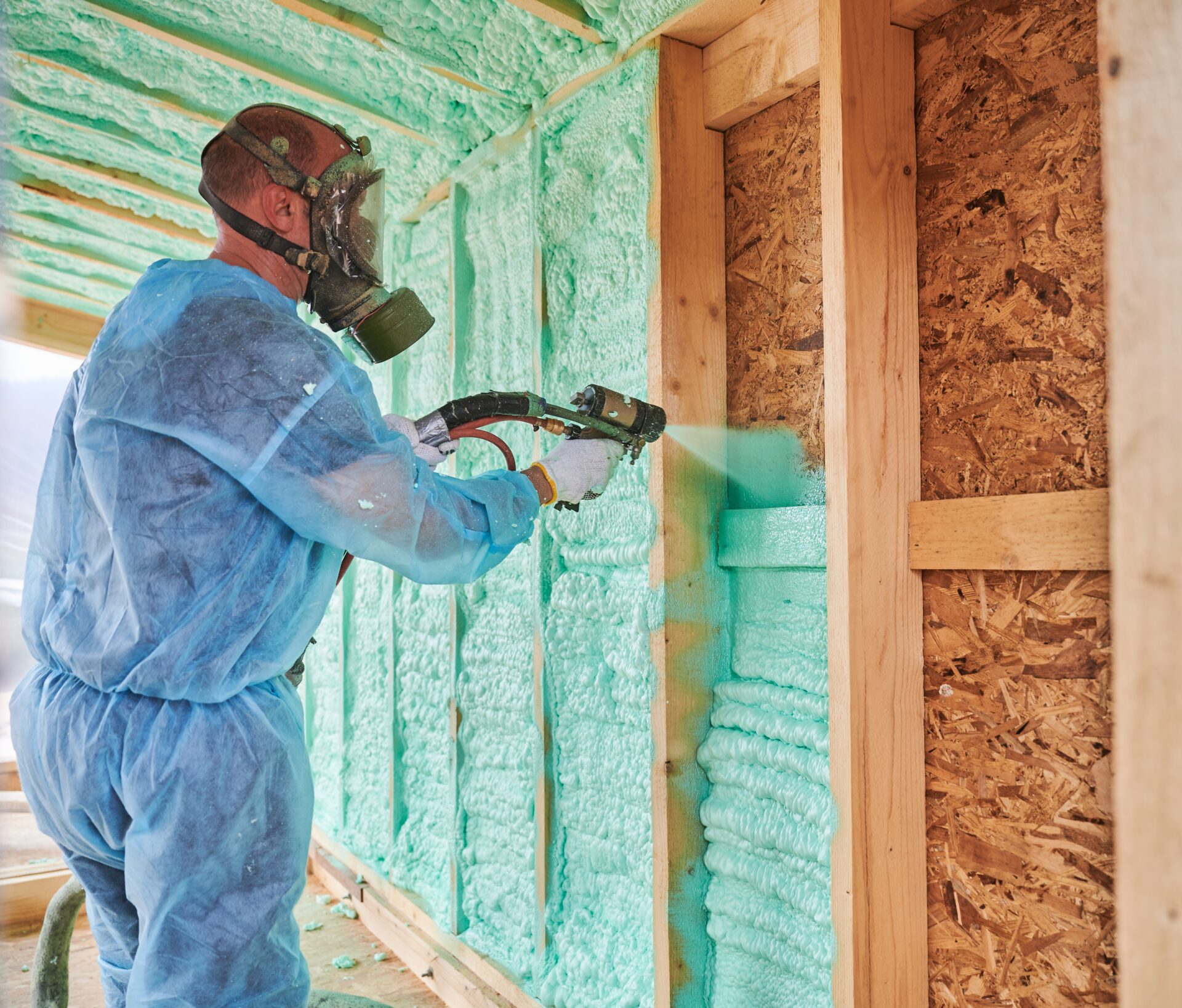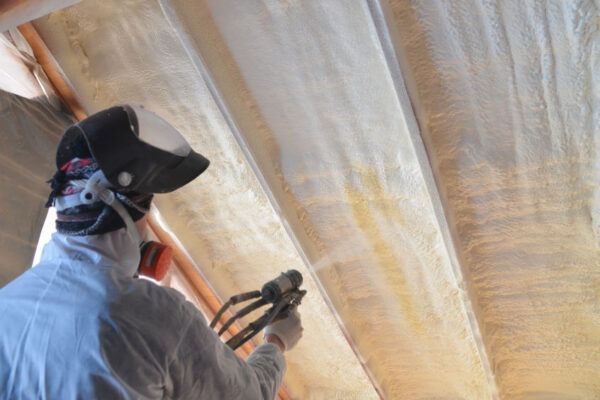Selecting the Right Sort Of Spray Foam for Your Insulation Requirements
Selecting the Right Sort Of Spray Foam for Your Insulation Requirements
Blog Article
Spray Foam: The Ultimate Solution for Air Sealing and Insulation
Spray foam insulation has arised as a leading remedy for efficient air securing and thermal insulation, using a special combination of residential properties that establish it apart from standard methods. Comprehending the complete range of its benefits, setup procedures, and comparisons with various other insulation types is essential for making notified choices.
What Is Spray Foam?
Spray foam is a versatile insulation material that combines the concepts of air securing and thermal resistance to boost power efficiency in buildings. Composed primarily of polyurethane or various other similar compounds, spray foam is used as a liquid that increases upon contact with surface areas, creating a strong, continual layer of insulation. This one-of-a-kind residential property allows it to fill spaces, splits, and gaps that traditional insulation products might forget, giving a remarkable air seal.
There are 2 main kinds of spray foam: open-cell and closed-cell. Open-cell spray foam is lighter and a lot more versatile, providing superb audio absorption and a lower R-value per inch - Spray Foam. On the other hand, closed-cell spray foam is denser, providing a higher R-value, dampness resistance, and added architectural stability to developing parts
The application process typically entails specific equipment, ensuring a seamless application that sticks to various substrates, consisting of wood, steel, and concrete. This flexibility makes spray foam appropriate for both new buildings and retrofitting existing frameworks. Its capacity to develop an airtight barrier dramatically adds to reducing power intake and boosting interior air top quality, consequently making it a favored selection amongst house owners and home builders alike.
Advantages of Spray Foam Insulation
Among the most considerable benefits of spray foam insulation is its outstanding capacity to develop a continual air obstacle, which effectively reduces power loss. Unlike typical insulation products, spray foam expands to load cracks and spaces, ensuring that air leakage is dramatically minimized. This characteristic not only improves energy effectiveness yet likewise results in lower utility bills gradually.
Furthermore, spray foam insulation offers remarkable thermal resistance, contributing to a much more steady interior environment. Its high R-value per inch enables effective insulation in constrained areas, making it suitable for attics, wall surfaces, and crawl rooms. Furthermore, the moisture-resistant residential or commercial properties of spray foam help avoid mold and mildew development, advertising healthier living problems.
An additional crucial advantage of spray foam insulation is its sound-dampening top qualities (Spray Foam). It efficiently decreases sound transmission in between spaces, developing a quieter and more comfortable home environment. The durability of spray foam also stands out, as it does not droop or settle gradually, preserving its efficiency throughout its life expectancy
How Spray Foam Works
Comprehending exactly how spray foam insulation works is crucial for appreciating its performance in air sealing and thermal resistance. Spray foam insulation contains two primary elements: isocyanate and polyol material. When these elements are mixed, they go through a chemical response that triggers the product to expand quickly, creating a dense foam that fills up cavities, cracks, and voids.
As the foam increases, it sticks to surface areas, creating an impermeable seal that dramatically lowers air seepage. This characteristic makes spray foam insulation extremely effective at avoiding drafts and moisture penetration, which can bring about power loss and damage over time. Furthermore, the straight from the source closed-cell version of spray foam provides superior thermal resistance as a result of its inflexible framework, successfully lessening warm transfer.
The one-of-a-kind buildings of spray foam allow it to conform to irregular surface areas, making sure detailed coverage and a seamless obstacle. Consequently, spray foam insulation not only boosts energy effectiveness but additionally adds to boosted indoor air top quality by decreasing the accumulation of allergens and contaminants. Inevitably, recognizing the auto mechanics behind spray foam highlights its role as a remarkable option for insulation and air sealing in both commercial and domestic applications.
Installation Process Review

Before installation, the space must be adequately cleaned and prepped, guaranteeing that surface areas are devoid of moisture, debris, and dirt. This action is critical because contaminants can jeopardize attachment and overall efficiency. When the location is prepared, the application entails blending both components of the spray foam, which increases upon contact and fills voids efficiently.
Trained specialists need to perform the installation, making use of specialized devices to guarantee consistent coverage and ideal thickness. Safety and security safety measures, consisting of wearing protective gear and making sure appropriate air flow, are necessary during this process. After application, the foam commonly cures quickly, developing a solid barrier that boosts power efficiency.
Comparing Spray Foam to Conventional Insulation
When evaluating insulation options, spray foam insulation sticks out in comparison to typical products such as fiberglass and cellulose. Among the primary advantages of spray foam is its remarkable air sealing abilities. Unlike fiberglass and cellulose, which can permit air seepage, spray foam expands upon application, filling up voids and holes to produce an airtight seal. This leads to enhanced energy performance, as less heated or cooled air leaves the home, resulting in reduced energy bills.
Additionally, spray foam supplies a higher R-value per inch than standard insulation types, offering more reliable thermal resistance in a thinner profile. This characteristic is particularly useful precede with restricted cavity deepness. Spray foam is immune to moisture and mold development, which can be a considerable worry with cellulose and fiberglass, particularly in humid environments.
Nevertheless, spray foam insulation typically lugs a greater in advance cost than its typical equivalents. Property owners must weigh this first investment versus lasting energy cost savings and efficiency advantages. Ultimately, while both insulation types offer their objective, spray foam becomes an advanced solution for contemporary insulation requirements, especially in regards to air securing and thermal performance.

Conclusion
In recap, spray foam insulation stands for an extremely efficient option for achieving optimum air sealing and thermal resistance. Its distinct buildings, including dampness resistance and audio dampening, make it suitable for different applications in both brand-new constructions and retrofitting tasks (Spray Foam). The preliminary costs might be higher compared to conventional insulation products, read this article the long-term benefits, such as significant energy savings and improved interior air top quality, justify the financial investment and emphasize its value in modern structure techniques.
Spray foam insulation has emerged as a leading remedy for effective air sealing and thermal insulation, offering an one-of-a-kind mix of homes that establish it apart from traditional methods.Spray foam is a versatile insulation material that combines the principles of air sealing and thermal resistance get redirected here to boost power efficiency in buildings.When assessing insulation choices, spray foam insulation stands out in comparison to typical materials such as fiberglass and cellulose. Eventually, while both insulation kinds offer their objective, spray foam arises as an extra advanced remedy for modern-day insulation requirements, particularly in terms of air securing and thermal efficiency.
In recap, spray foam insulation represents a very effective solution for achieving optimal air securing and thermal resistance.
Report this page